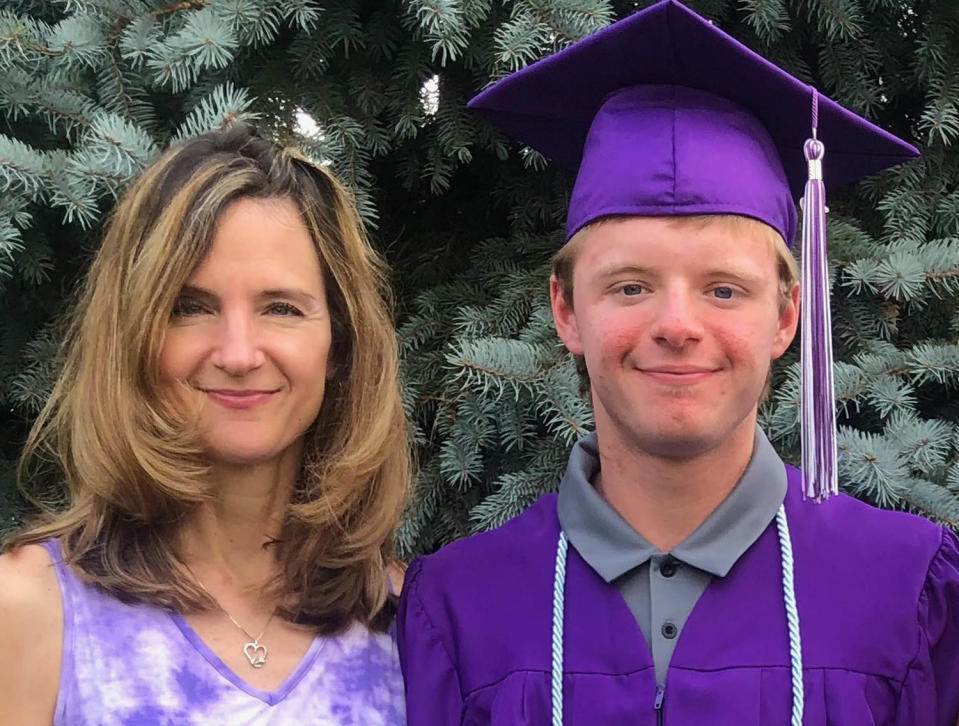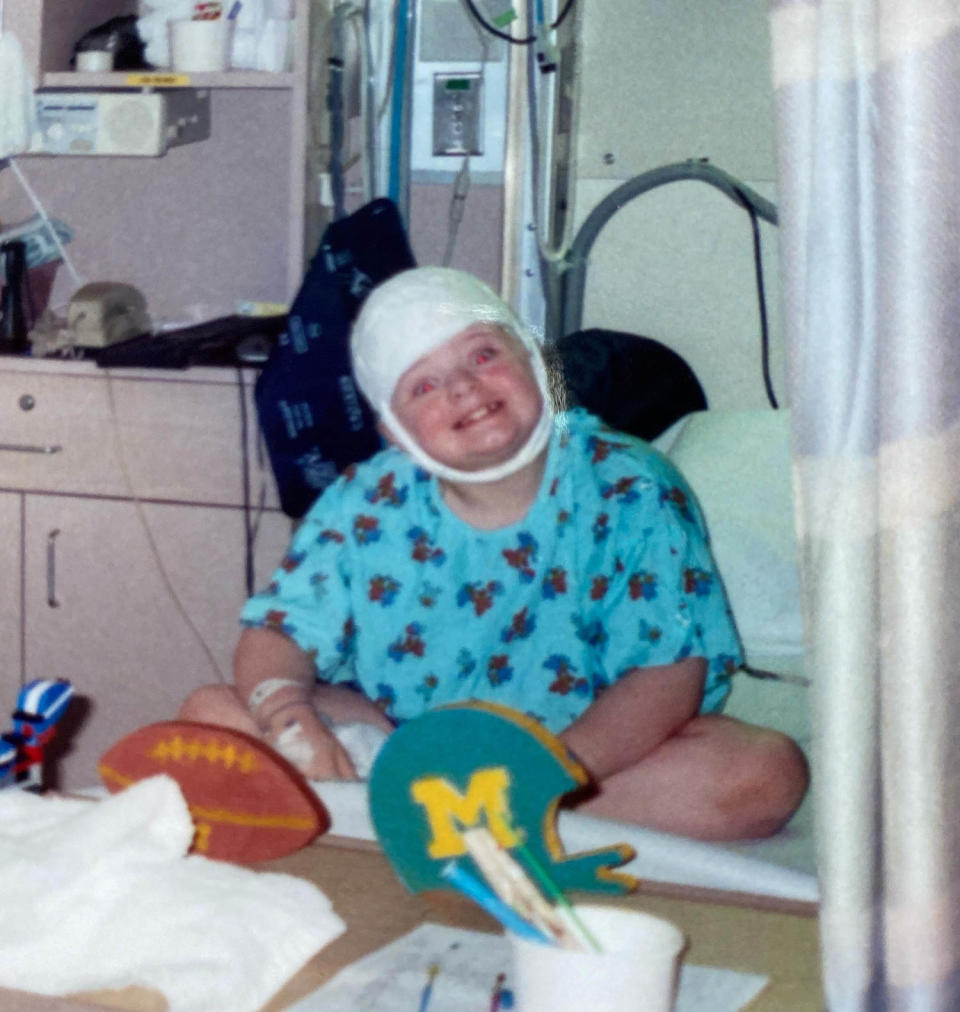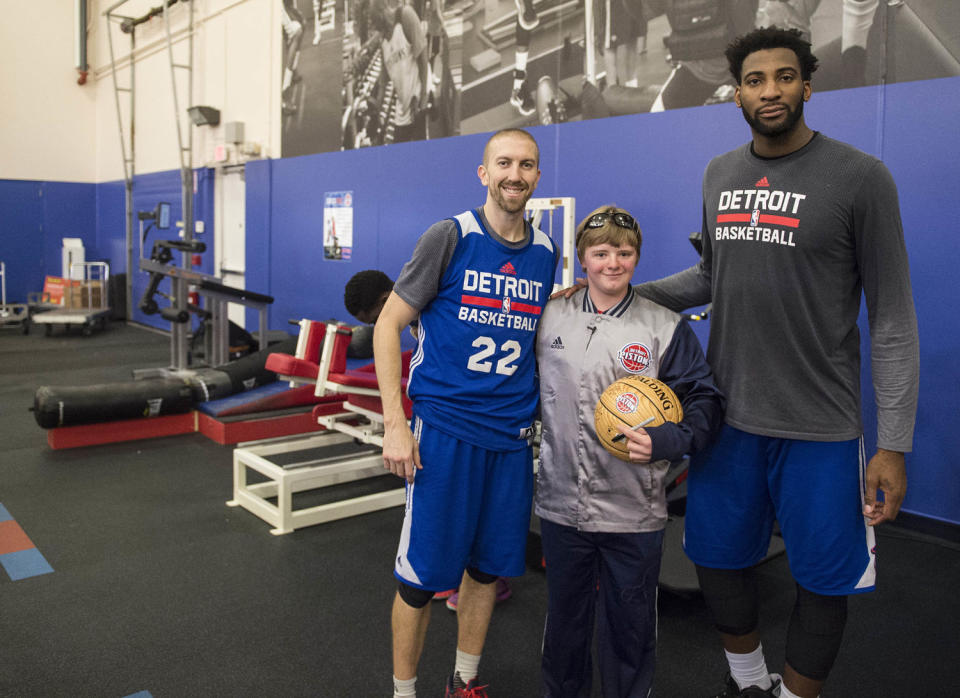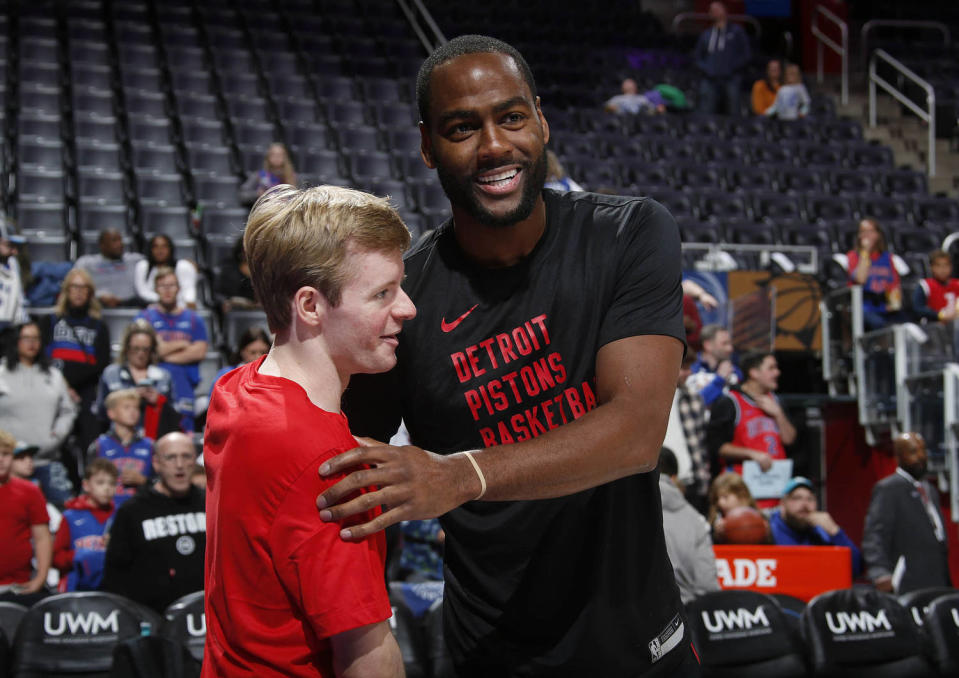After a decade of seizures and brain surgery, 22-year-old becomes Pistons ball boy
- Oops!Something went wrong.Please try again later.
- Oops!Something went wrong.Please try again later.
- Oops!Something went wrong.Please try again later.
- Oops!Something went wrong.Please try again later.
Lisa Ratledge can still remember the sleepless nights fueled by the fear that her young son might have a seizure while she was asleep and die in his bed.
She became tearful at the memory of her son, Glenn, in the hospital with bandages on his head as a 9-year-old following a 2010 surgery to remove part of his brain to try to stop the seizures.
That’s what makes it so remarkable now when she watches Glenn on the basketball court interacting with some of the NBA’s biggest stars as part of his ball boy duties for the Detroit Pistons. His third season as the team's ball boy begins Oct. 28, with the Pistons’ home opener at Little Caesars Arena against the Chicago Bulls.
“My boy is down on the court with these amazing players, and he’s having the time of his life,” Lisa tells TODAY.com. “It’s like night and day. It went from the worst for him to the best.”
“I’m just happy I’m alive,” Glenn tells TODAY.com. “Sometimes I tell myself that you never know what can happen.”
Glenn nearly died multiple times as a child due to seizures caused by a genetic condition known as tuberous sclerosis. Now, he's 22 and has found a home working his first job for the Pistons.
“It’s unbelievable watching him out there,” Pistons equipment manager John Coumoundouros tells TODAY.com. “I think he’s just so proud of what he’s been able to conquer.”
“He’s great to be around,” Pistons guard Cade Cunningham, who was the No. 1 overall pick in the 2021 NBA Draft, tells TODAY.com. “He always has such great energy. He’s the man.”
Diagnosed with TSC
Glenn was about 14 months old when Lisa went to check on him in his crib in the morning and found him having a seizure.
“It’s still so hard to talk about,” she says.
The seizure wasn’t stopping, so she called 911. Glenn was taken via a survival flight to University of Michigan Health C.S. Mott Children’s Hospital in Ann Arbor, Michigan.
“I was standing there, watching this helicopter come down on the helipad at the local hospital, and they’re putting my son on it, and I’m just bewildered,” she recalls. “I’m like, ‘What’s going on?’ We don’t have epilepsy in our family on either side, so this was just completely out of the blue.”
It took a week before Glenn was diagnosed with tuberous sclerosis complex (TSC), a rare genetic disease that causes benign tumors to grow in the brain and several areas of the body, according to the National Institute of Neurological Disorders and Stroke. The name come from the tubers, or potato-like nodules, that form in the brain. Lisa and Glenn’s father had been tested for TSC but had shown no signs of it.
TSC, which has no known cure, can cause seizures, brain lesions, cognitive difficulties and behavior problems, but the effects can vary from person to person, according to the NINDS.

Following the diagnosis,Glenn's seizures were usually brief, lasting 20 seconds to a minute and occurring a few times a week, Lisa says. However, his neurologist told her that when Glenn reached the onset of puberty, his seizures could intensify.
Sure enough, when he was 9 years old, he began having seizures that would not stop or respond to multiple medications. He was airlifted to the hospital several times, and there were no warnings as to when the seizures might hit.
“It was happening to the point where we almost lost him a couple times,” Lisa says tearfully. “He was intubated when he was flown there to keep his airway open so that he could keep breathing and stay alive. One time I saw my baby turn gray on the floor right in front of me as the paramedics were in the room. I wasn’t sleeping because I was afraid he wouldn’t make it through the night.”
Glenn says “it’s a blessing” that he has no memory of the seizures.
However, the seizures reached the point where Lisa felt something had to be done, so they elected to have surgery.
A life-changing procedure
Before Glenn could undergo a surgery to potentially alleviate his condition, doctors at C.S. Mott Children’s Hospital had to determine which area of his brain was triggering the seizures.
MRI scans that Glenn had previously undergone demonstrated a number of cortical tubers in his brain, which are essentially disorganized collections of neurons, Dr. Hugh Garton, the pediatric neurosurgeon at C.S. Mott who performed Glenn’s surgery, tells TODAY.com.
In order to determine where the electrical activity causing the seizures was emanating from, doctors performed a craniotomy on Glenn by removing part of his skull. They put a series of electrodes over the surface of his brain that let them know which area was showing activity when he would go into a seizure.
In 2010, 9-year-old Glenn underwent surgery to remove part of the back half of the right side of his brain. His recovery lasted about a month in the hospital.

“It was hard because I couldn’t move around,” Glenn says. “All I had to do was lay there and rest. I was getting really sick, and I didn’t have any appetite after my surgery. I needed ice chips because I couldn’t swallow anything.”
The part of the brain he had removed is associated with vision, so doctors feared he would have problems with his sight. Instead, 13 years later, he’s rebounding warmup shots by the Detroit Pistons before games.
“By all rights, he should’ve lost a substantial portion of his visual field,” Garton tells TODAY.com. “When Glenn looks straight ahead, he most likely would not be able to see anything on the left side. You wouldn’t pick being a ball boy for the Pistons as an ideal environment for someone who isn’t able to see out of his right visual field, because they would assume he has a big blind spot. ... But he doesn’t seem to have one at all, which is a real piece of good fortune.”
Glenn says he has not had a seizure in the 13 years since the surgery. However, he is unable to drive due to the possibility of seizures, and he has a mild degree of cognitive issues.
Joining the Team
The seeds for Glenn’s dream job with his hometown team were planted in 2015, when Glenn was honored as a “Piston for the Day” by the team for everything he had overcome.
The Pistons invited him to their arena and presented him with a jersey and a one-day contract. He also got to meet the players.

“It was a big surprise,” Lisa says. “I was just beside myself. It was a dream for both of us because I knew how much it meant to Glenn. We always called him the Pistons’ biggest fan, and they announced him that way on the video they made about it.”
The experience stuck with Glenn to the point where he direct-messaged Coumoundouros a few years later to ask if he remembered him from that day. The two began talking regularly about local sports and their lives.
Once Glenn turned 18, the required minimum age for being a ball boy, Coumoundouros called him up with a job offer. The position entails rebounding and passing to the players during warmups at games, plus cleaning the bench area and other duties around the court.
“It was probably 10 o’clock at night and I was in my pajamas, very tired, and Glenn comes up to me with his phone. He says, ‘Guess what?’” Lisa recalls.
“I’m like, ‘Are you serious? Are you joking with me?’” Glenn says. “(Coumoundouros) said I would be rebounding for the players, passing to them, helping the coaches out with the players. And I was like, ‘OK, I’m in!’”
It was a big commitment because it required Lisa to drive Glenn back and forth to 41 home games a season. She works as a part-time lunch aide at a school after being a stay-at-home mom for Glenn and his sister while they were growing up, so she’s able to manage it.
“His mom is the hero of everything in this story,” Coumoundouros says. “She’s the epitome of a parent that does everything for her children.”
Glenn remembers his first day on the job, when he walked out onto the court to see Pistons center Luka Garza, who is now on the Minnesota Timberwolves, working on his rebounding.
“I just went out there and introduced myself, and it was just so relaxed,” Glenn says. “It’s a sport that I love, and these people are people like us, so I thought, ‘Don’t worry about it, you got this.’”
He bonded with players to the point that former Pistons players like Bulls center Andre Drummond and Nuggets guard Kentavious Caldwell-Pope make a point to say hello to Glenn and give him a hug when they came back to Detroit for games with their new teams.
“It was something,” Glenn says. “It was like, ‘You guys remember me from years ago?!' It meant a lot.’”

Glenn also got to know Cade Cunningham, 22, a budding star for the Pistons, when Cunningham was sidelined for all but 12 games last season with an injury.
“He would always check in and ask me how my daughter’s doing,” Cunningham says. “He did his research and cared about things going on in my life besides basketball. I always thought that says a lot about him.”
“He brings that positive energy every single day,” Coumoundoros adds. “He just glows whenever you’re around him. His No. 1 thing in life is doing things correctly.”
The presence of the Pistons’ medical staff at the arena also means Lisa can know her son will be in capable hands if Glenn were ever to have another seizure.
Now she gets home from dropping him off, flips on the pregame TV broadcast, and gets a glimpse of her son rebounding for the Pistons players in the background, living his dream.
“I really wasn’t a sports person, period,” Lisa says. “I was more of a dancer and an artist when I was growing up. Now I’m a huge Pistons fan. I’m the second-biggest Pistons fan."
This article was originally published on TODAY.com

